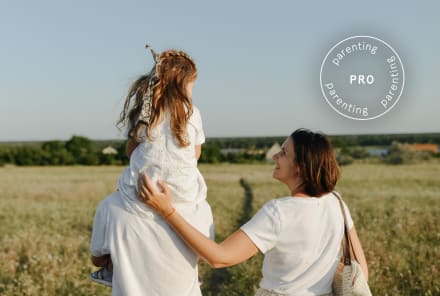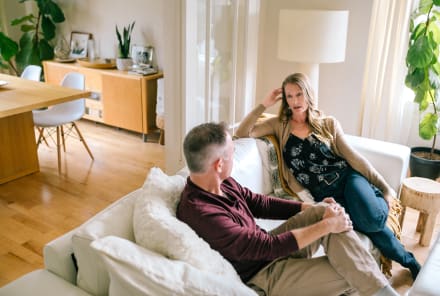Advertisement
The Infectious Generosity Phenomenon (And Why You Should Care)

It's no secret that the internet has had somewhat of a toxic effect on the world. But before society and social media clashed, Chris Anderson used to dream of the internet as a force for bringing people together. As the head of TED (aka the organization behind the wildly popular TED Talks), he refuses to give up on the idea of a healthier, more optimistic version of the interweb. And it all comes down to generosity—specifically infectious generosity.
In his book, Infectious Generosity: The Ultimate Idea Worth Spreading, Anderson demonstrates how generosity's infectious potential draws from two key drivers: human nature and the connectedness of the modern era. He explains how traits that lie deep inside every human can combine to create chain reactions of generous behavior—and how these ripple effects can be turbocharged by the internet for world-changing impact.
For example, the excerpt below reveals the story of "The Mystery Experiment"—or how a pair of philanthropists gave strangers on the internet $10,000 (and what happened next). To learn more about the phenomenon of infectious generosity and how you can embark on your own generous acts, purchase your copy here!
Excerpt from Infectious Generosity: The Ultimate Idea Worth Spreading by Chris Anderson
In 2019 a married couple in the TED community made an investment windfall. They wanted to respond to their good fortune by giving away a good portion of it: $2 million. But rather than simply support TED or another cause, they started to wonder if there might be a more creative way to give away the money.
The idea they came up with was certainly creative. Audacious even. They decided to give it away anonymously to strangers, $10,000 at a time. And they wanted to collaborate with TED and with social scientists to see if we could help amplify the impact of these gifts.
Having already seen signs of generosity's power, I got excited at the opportunity to help with this unlikely project and proposed a dialed-up version of the experiment I had carried out at my school described in the last chapter. Working with the psychologist Professor Elizabeth Dunn and her research team at the University of British Columbia, we helped craft what came to be known as the Mystery Experiment.
Here's how it worked:
The Invitation
In December 2020, I put out a call on social media inviting people to apply to participate in an unusual research project. "It will be exciting, surprising, somewhat time-consuming, possibly stressful, but possibly also life-changing." No mention of money.
We tagged it #MysteryExperiment, and we ended up with a couple of thousand applicants, none of whom knew what they were signing up for. We selected a wide-ranging group of 200 people from seven countries (Indonesia, Brazil, the UK, the U.S., Canada, Australia, and Kenya) and sent them a video sharing the good news: Each of them was to get a $10,000 gift from "an anonymous couple in the TED community" (transferred into a new PayPal account in their name). They could spend it however they wanted. The only major rules were:
• It had to be spent over the next three months.
• They had to report back to us on what they spent it on.
There was one other key twist. Half the group was encouraged to keep the news private. The other half were urged to share the news with their social media followers and to make occasional posts whenever they spent some of the money. (There was also a control group of 100 who got only a small fee to fill in surveys. Unlucky for them, but they did add crucial scientific validity to the experiment.)
The Response
The results were genuinely exciting.
Just like the 13 students in England, the vast majority of the 200 recipients of the Mystery Experiment funds responded by simply giving away a significant portion of the money! On average, only a third of the money was spent on their own wants and needs. The rest was devoted to friends, family members, and outside causes. Even those who had the lowest incomes and for whom the sum was life-changing still, on average, gave away two-thirds of what they received.
This is convincing evidence against the so-called rational agent theory of economics, which posits that by and large people simply spend on themselves. Perhaps people will do that with money they have earned. But when they're recipients of someone else's generosity, it turns out they experience a strong desire to respond in kind.
One surprise is that there was no significant difference between those who could make their decisions privately and those who had to share their spending on social media. This implied that people were giving out of a natural instinct to reciprocate rather than out of the need for social approval from their online audience.
Their Stories
After the completion of the experiment, I reached out to some of the participants and was floored by what they told me.
Lydia Tarigan, a creative director based in Indonesia, spent almost none of the 140 million Indonesian rupiah she received on herself directly. Instead she gave 10 million rupiah to a co-worker to whom she felt grateful. And the same again to another. She gave 5 million to a colleague she knew less well, but who had recently been diagnosed with cancer. She donated millions of rupiah to the World Wildlife Fund and to flood victims and to a pet-rescue charity. She paid for health checkups for members of her family.
She told me, "When I learned I was selected, I screamed from the top of my lungs. Generosity is remarkable. It makes the recipient feel seen. It's like handing them their self-respect. It builds a bridge of connection between the giver and the recipient. So I wanted to make other people feel seen, just like how I had felt seen.""
That instant desire to reciprocate was articulated beautifully by Claire Maxwell, from Canada. She said, "I often thought of the donors and my sense of wanting to make them proud. They took a tremendous financial risk, and I wanted to do all that I could to pay this risk forward. I believe that I would have made different spending choices if I had won this same amount of money in a lottery. I never really felt that this was my money to spend—it was given to me by a family who thought beyond themselves. It was a privilege to share their gift with others."
A UK tech executive, Sarah Drinkwater, decided to give away the full $10,000—and then immediately had her resolve tested when an unexpected tax bill arrived the very next day for an even bigger sum. But she stuck with her plan and decided to make 20 mini-grants of $500 each, funding, for example, a pensioners' picnic, an artist's mural, and sensory toys for autistic children. She told me, "I walk past something I funded nearly every single day—the 3D-printed neighborhood mini food bank, the bank of flowers outside a local school. So many of the recipients told me it was the public acknowledgment of their work that felt powerful, alongside the money. This project reminded me that things I hold true—community, care, joy, acting generously—are things others hold to be important too, and that I should believe in myself."
Kirk Citron, from the United States, said, "Instead of thinking of toys I might buy for myself, I quickly concluded: 'If the Mystery Experiment benefactor can give away $2 million, I can certainly give away $10,000.' I decided to 'pay it forward'—and, by giving it to Humanity Now (my chosen organization) as a matching grant, invited others to 'pay it forward' with me. Many joined in until, together, we were able to make a gift of $27,000. Generosity inspires generosity."
It's striking how many people specifically commented on the urge they felt to respond in kind to the donors' generosity. (To be clear, there was absolutely no formal obligation that they should do so. They were told they could spend the money however they chose. And there was no reason for them to think that they would ever hear from the anonymous donors again.)
Thus, the experiment provided some of the most compelling scientific evidence yet of the robustness of people's inclination to respond to generosity with generosity of their own. Most prior experiments had been based on small gifts made to psychology students at universities. This was the biggest study done with a much larger sum involved and activated in multiple countries. In every single culture and at every single income level, people responded to generosity in kind.
To start your giving journey, read Infectious Generosity, by Chris Anderson.












